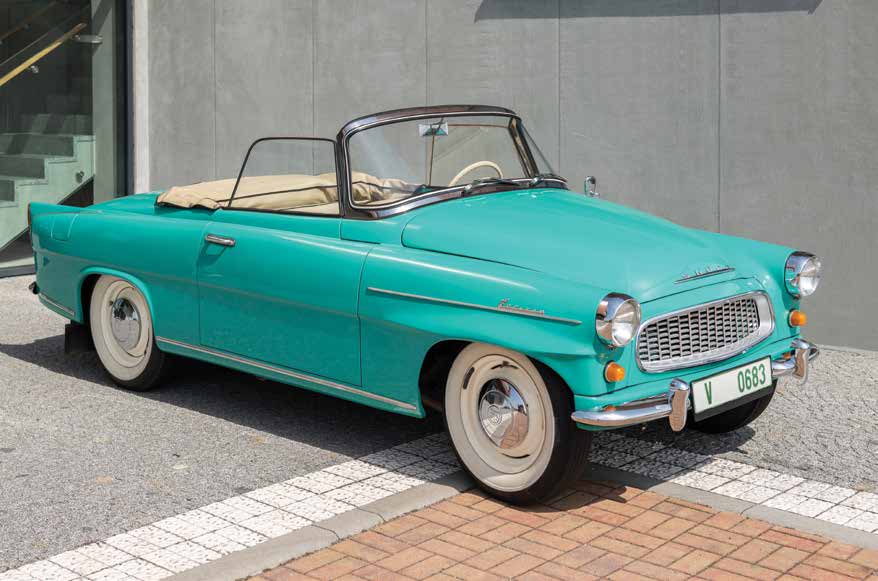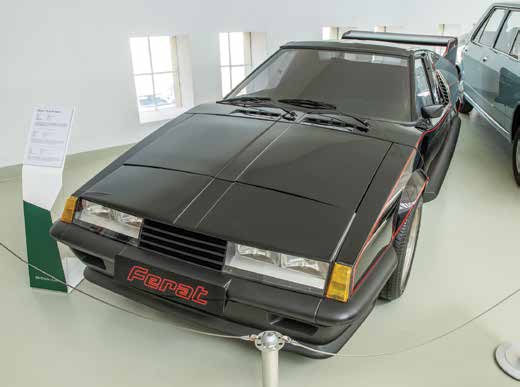The big news first. At Skoda’s design headquarters near Prague, I got to see its brand-new, for-India sub-4-metre compact SUV, called the… well, whatever ‘K’ name is finally decided upon; Skoda India ran a naming contest for the car not long ago, and apparently one of these has been picked. I also had the opportunity to interact briefly with Skoda’s exterior design head, Karl Neuhold, and ask him about why the car looked like that. He had some interesting points to make, but because the whole thing is under a strict embargo, I can’t reveal anything here; needless to say, I can’t say a damn thing about the car, either, except that it’s (fill in the blank yourself), and that it’ll be a welcome addition to the red-hot Indian SUV segment.
What I can say is that Skoda is taking the Indian market very seriously, and all rumours about its imminent exit from our shores were shot down by its CEO, Klaus Zellmer, whom I also got to chat with. He said that the firm was doubling down on its strategy for Indian, having learnt some lessons over the years, including the fact that its previous approach of ‘over-engineering’ cars for the Indian market (and not providing enough features) had resulted in higher prices than desired. Zellmer also revealed that Skoda was actively looking for a local partner, in order to deal with the unique challenges of the Indian market; this is good news all-round, both for Skoda fans and the industry in general.
Skoda likely isn’t the first name you would think of when you cast your mind to storied European brands, but it has a rich and fascinating heritage nonetheless – and there’s an Indian connection going back several decades. I learned about this during a visit to Skoda’s archival section in its museum in Mlada Boleslav, during which we were given access to historical documents, diagrams, photographs and the like. In May of 1935, four Skoda Populars, driven by seven intrepid individuals, set off from Prague for Calcutta, roughly 10,500 km away. Their route was through eastern Europe, Turkey, Lebanon, Iraq, Iran and Afghanistan and finally into undivided India, where they congregated in Calcutta. They then set off for Bombay, where they boarded a cargo ship to Italy; from there, they drove back to Prague, having covered over 15,000 km by road. I can only imagine how exciting, fraught and downright insane this journey will have been, but people were built differently back then, I believe.
During the visit, we also went to Skoda’s restoration centre, where a small bunch of people lovingly restore heritage models. Several cars were in varying states of repair in the workshop, including a stunning Popular Monte Carlo, which looked like it had just been driven out of a showroom. This put me in mind of the occasion when, back in 2006 or 2007, Srini and I had visited the Manjusha Vintage Car Museum in Dharmasthala; this is a temple town in the hills near Mangaluru, and the temple’s administrator had set up the museum, being a car enthusiast. Among the models there was a Skoda Popular Roadster from the late 1930s, which we ended up featuring in the magazine; I think it’s time for a Roadster Redux of sorts.

Skoda’s museum also has a section housing some concept cars and a bunch of its racing and rally cars (yes, Skoda does have a pretty solid racing heritage). The most intriguing car here was the 110 Super Sport, a very Batmobile-like sportscar that stunned the world when it was unveiled at the Brussels Motor Show in 1972; nobody had ever seen anything like this from Skoda (and we still haven’t). It was low-slung, svelte and rather badass, a 2-seater with its 4-cylinder, 1.1-litre, 72 bhp engine placed just ahead of the rear axle; top speed was a very creditable 180 kph. The designers went a step further than scissor doors and had the entire front canopy fold out towards the nose, and clearly they had an excess of lights to play with; there were six headlights and no less than 16 tail lights. Unfortunately the concept was too radical for production at that time; instead, it gained fame a decade later in the Czech film Ferat Vampire, where it played the title role of a racing car feeding off (checks notes) its driver’s blood (its design was modified for the film, too).
Skoda also lined up taxi rides in its all-conquering Fabia RS Rally2 car, at its training ground. The tarmac course runs through a forest, and during my two laps, I was in total awe of the driver as he absolutely ripped the car through the course, pulling off seemingly anti-physics manoeuvres with it; it’s one thing to watch some WRC action, marvelling at the way the drivers control their cars, and it’s quite another to sit alongside one. To drive a small, light and massively powerful car through some of the most challenging terrain in the world, tarmac or gravel, requires incredible skill, the reflexes of a cat and nerves of pure titanium, and it’s not for nothing that I consider WRC the pinnacle of 4-wheeled motorsport. The car has a 1.6-litre turbo-petrol engine, making 290 bhp and 43.8 kgm of torque, with a 5-speed sequential gearbox, 4WD and mechanical self-locking diffs on both axles. None of these things matter during blast off, because the sheer sensations of speed and agility overwhelm your brain, which struggles to understand what’s going on.
What else did Skoda have lined up for us? Well, there was the 7-seat Vision S concept, which was… suitably concept-like. We could also pick from among the Enyaq, Octavia, Kodiaq and Superb, so naturally I opted for the beautiful Felicia convertible from 1959, a much more interesting car than any of these. I took it for a long-ish spin on a glorious, hot day, and had a jolly good time; look out for a proper review of it in a forthcoming issue. The OG Skoda Superb (from 1942) was also available to be driven around in, and once you experience its cavernous, plush rear cabin, no modern car will suffice. Oh all right, I also took the Enyaq for a spin; it’s due to be launched here by the end of this year/early next year, so look out for a driving impression of that car too.

















